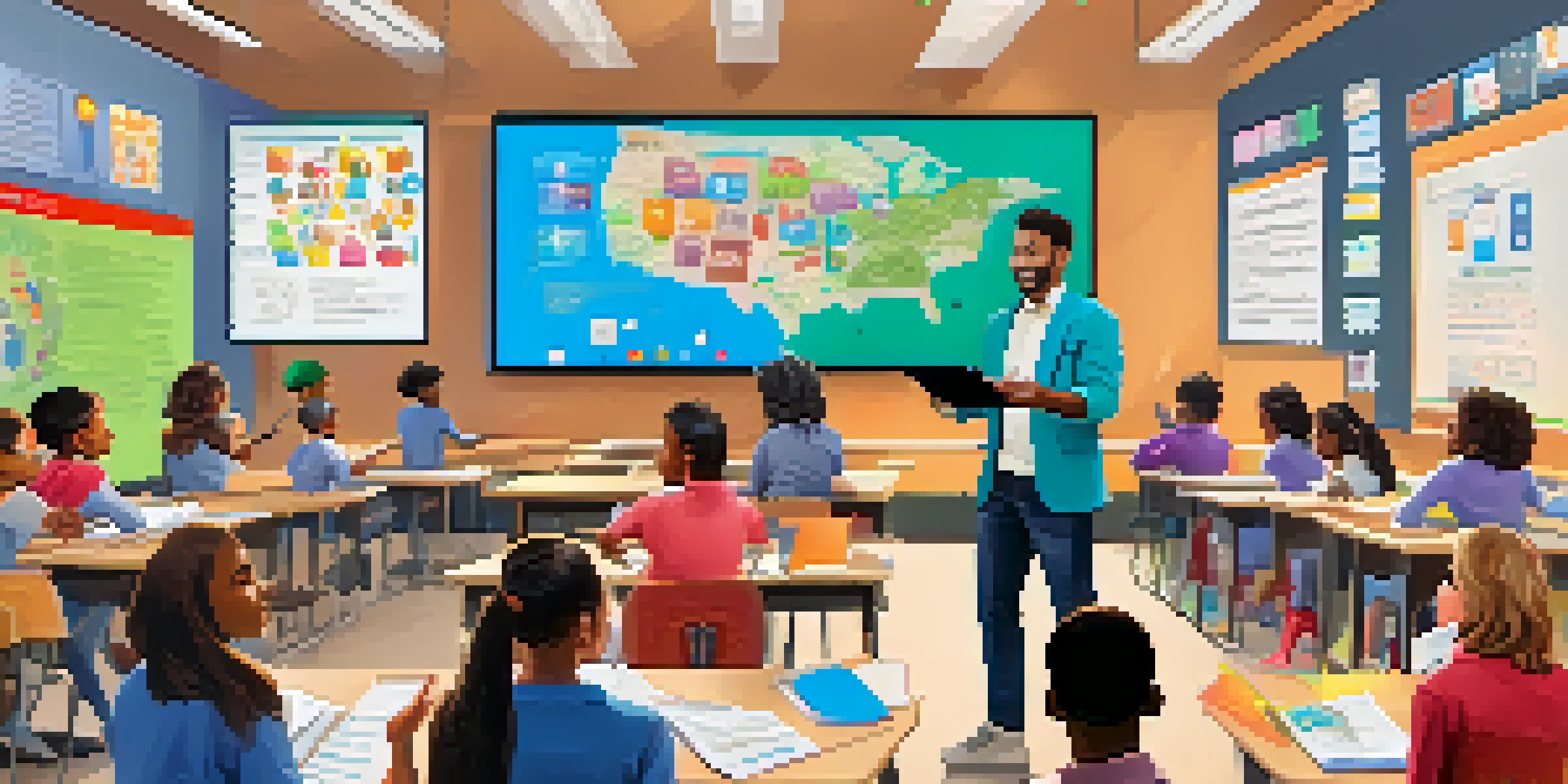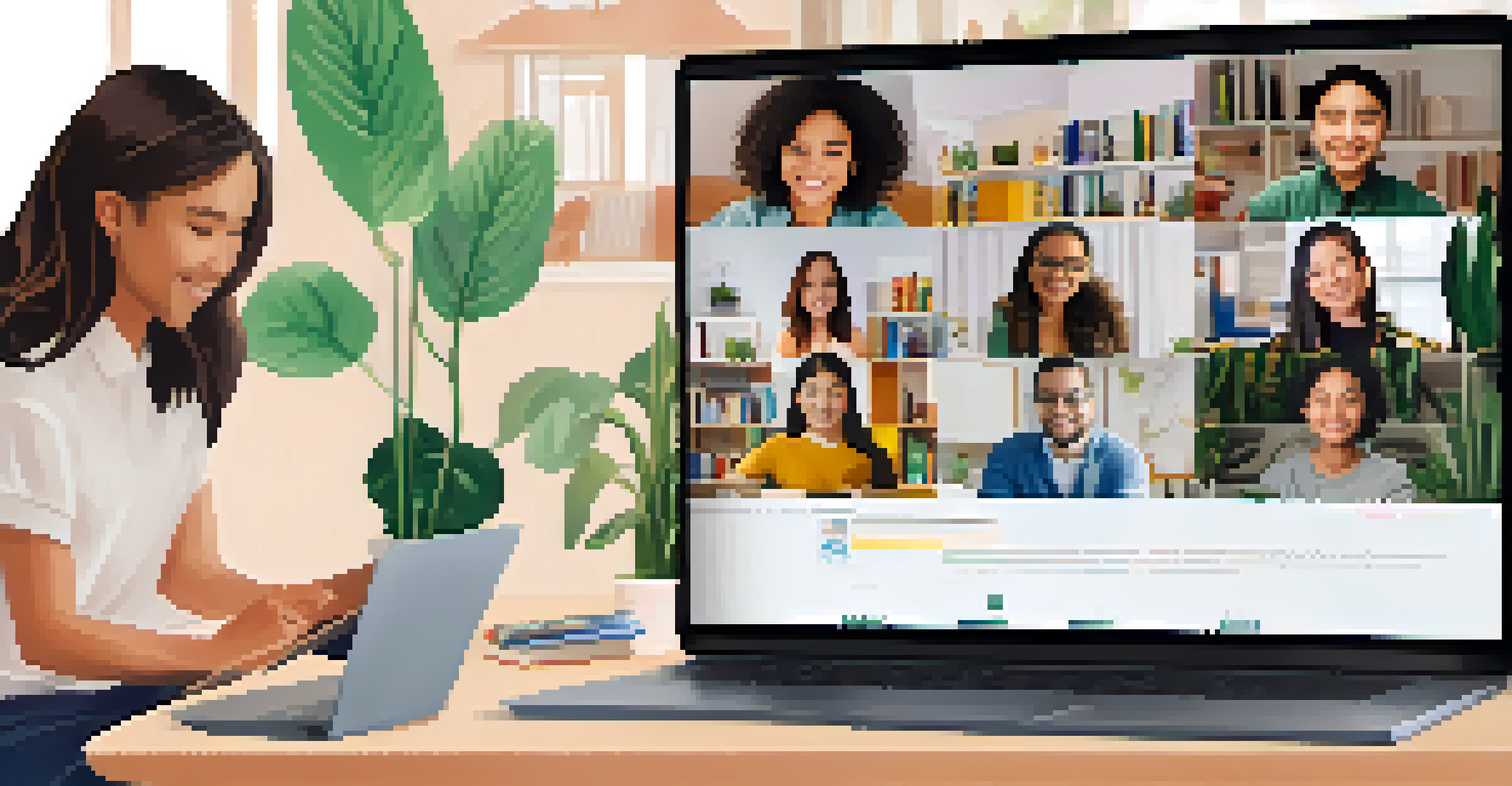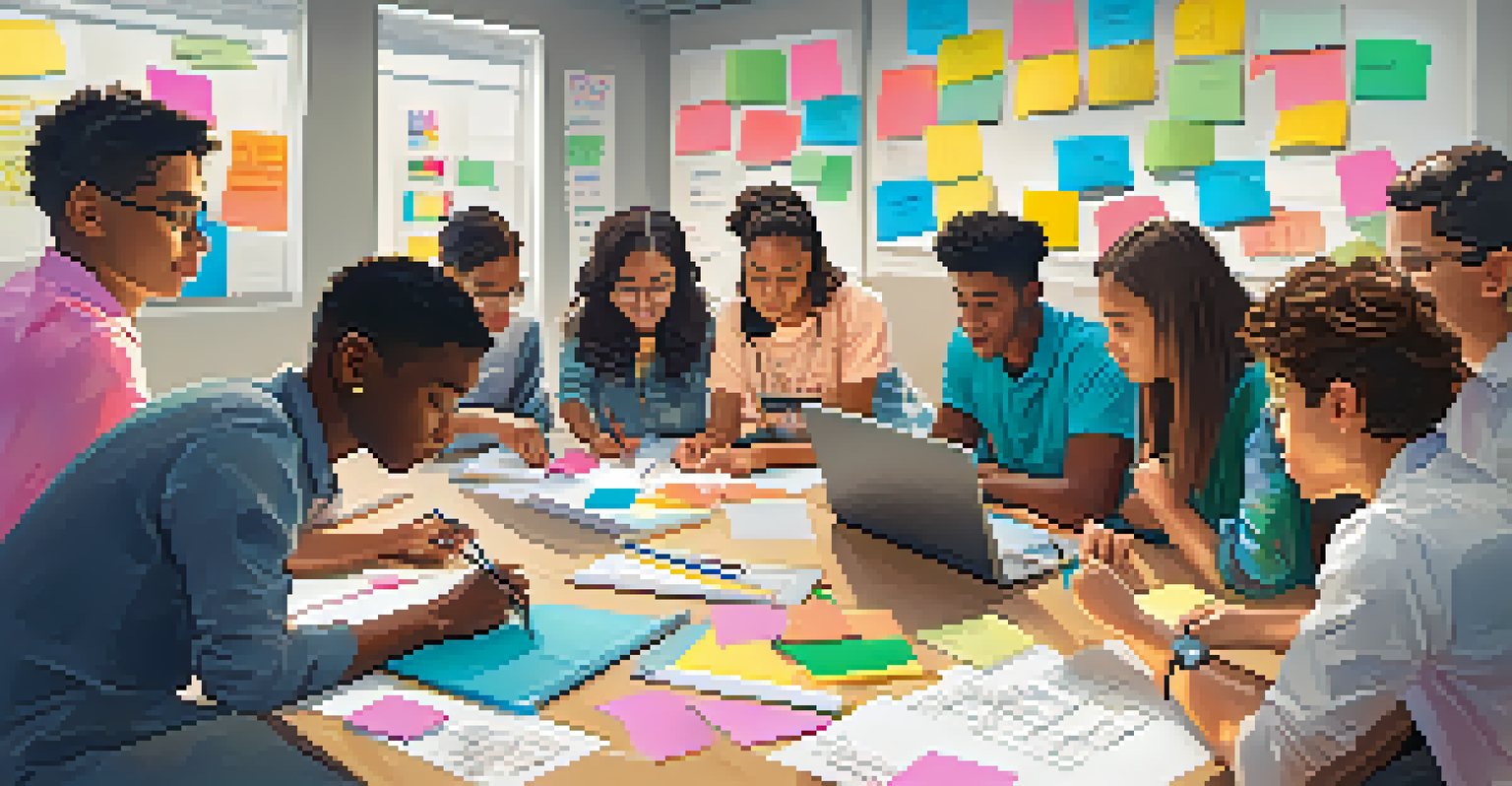Real-Time Learning Activities: Engaging and Interactive

Understanding Real-Time Learning Activities and Their Benefits
Real-time learning activities are interactive experiences that happen as they are being taught, rather than in a traditional, static manner. These activities can include live quizzes, collaborative projects, or instant feedback sessions. The main advantage is that they foster engagement and allow learners to apply concepts immediately, enhancing retention.
Tell me and I forget. Teach me and I remember. Involve me and I learn.
Imagine you're in a classroom where a teacher poses a question, and students respond in real-time using their devices. This approach not only keeps students attentive but also makes them feel like active participants in their learning journey. The immediate nature of feedback helps clarify misunderstandings on the spot.
Moreover, real-time learning activities can be adapted for different environments, whether in-person or online. They cater to diverse learning styles, ensuring that every student has a chance to contribute and learn actively. This flexibility is crucial in today's evolving educational landscape.
Using Technology to Facilitate Real-Time Learning
Technology plays a pivotal role in implementing real-time learning activities. Tools like Kahoot, Quizizz, or Google Forms can transform traditional lessons into interactive sessions filled with instant quizzes and polls. This integration not only makes learning fun but also allows for immediate assessment of student understanding.

For instance, a teacher can use a platform like Kahoot to create a game-based quiz. Students can join in from their own devices, competing in real-time to answer questions. This not only promotes healthy competition but also encourages collaboration and discussion among peers, reinforcing learning even further.
Real-Time Learning Boosts Engagement
Interactive activities like live quizzes and collaborative projects keep students engaged and enhance their retention of concepts.
Additionally, technology allows for versatility. Whether in a large lecture hall or a small online class, these tools can be scaled to fit the audience size and learning objectives. This adaptability ensures that every learning experience can be engaging and effective.
Interactive Quizzes: A Fun Way to Reinforce Learning
Interactive quizzes are a cornerstone of real-time learning activities. By incorporating questions that require quick thinking and immediate responses, students become more engaged and invested in the learning process. These quizzes can cover a wide range of topics and can be tailored to suit different education levels.
The ultimate goal of education is to create people who are capable of doing new things, not simply repeating what other generations have done.
Think about a situation where students are preparing for an exam. Instead of a dull review session, a teacher could organize a live quiz competition. This approach not only breaks the monotony but also helps students learn from their mistakes in real-time, as they can see the correct answers immediately after each question.
Moreover, interactive quizzes promote a sense of community in the classroom. Students cheer each other on and often discuss the answers, creating a collaborative atmosphere. This camaraderie enhances the learning experience, making it more enjoyable and effective.
Collaborative Projects: Learning Through Teamwork
Collaborative projects are another dynamic way to engage students in real-time learning. These activities encourage teamwork and communication, skills that are essential in both academic and real-world scenarios. By working together, students can pool their knowledge and perspectives, leading to deeper understanding.
Imagine a group project where students must solve a problem together, using a shared online platform to brainstorm ideas and create solutions. This not only allows for real-time collaboration but also teaches students how to navigate challenges as a team, simulating real-life work environments.
Technology Enables Effective Learning
Tools such as Kahoot and Google Forms facilitate real-time learning, making lessons more interactive and adaptable to various environments.
Additionally, collaborative projects can foster a sense of accountability. When students know that their peers are counting on them, they are more likely to contribute meaningfully. This shared responsibility enhances engagement and promotes a positive learning atmosphere.
Instant Feedback: The Key to Continuous Improvement
One of the most crucial aspects of real-time learning activities is the opportunity for instant feedback. When students receive immediate responses to their work, they can identify areas for improvement right away. This quick turnaround helps solidify learning and encourages students to take ownership of their education.
For example, in a writing workshop, instructors can provide instant feedback on student drafts during a live session. This allows students to make changes on the spot, leading to a more productive learning experience. The immediacy of feedback can motivate students to refine their skills continuously.
Moreover, instant feedback creates a safe learning environment where mistakes become learning opportunities. Students feel more comfortable taking risks in their learning when they know they’ll receive constructive guidance promptly. This culture of continuous improvement is vital for fostering growth.
Gamification: Making Learning Engaging and Fun
Gamification is the process of incorporating game-like elements into learning activities to enhance engagement. This approach can transform mundane lessons into exciting challenges that motivate students to participate actively. By adding elements like points, badges, or leaderboards, students are encouraged to strive for achievements.
For instance, a teacher might create a scavenger hunt where students earn points for completing tasks or answering questions correctly. This playful competition keeps learners engaged and eager to participate, making the learning experience more enjoyable.
Instant Feedback Drives Improvement
Immediate responses to student work allow for quick identification of areas needing improvement, fostering a culture of continuous learning.
Furthermore, gamification taps into students’ natural desire for achievement and competition. It makes learning feel less like a chore and more like an adventure. This shift in perspective can lead to higher retention rates and a more profound love for learning.
Real-Time Learning in an Online Environment
With the rise of online education, real-time learning activities have become more relevant than ever. They help bridge the gap between traditional classroom dynamics and virtual learning experiences. By employing tools and methods designed for real-time interaction, educators can keep students engaged, even from a distance.
For example, using video conferencing platforms, teachers can host live discussions, workshops, or Q&A sessions where students can participate in real-time. This interaction fosters a sense of community among online learners, replicating the engagement found in physical classrooms.

Moreover, real-time activities in online environments can also be recorded and revisited, giving students the flexibility to review content at their own pace. This dual benefit of live interaction and accessibility creates a well-rounded learning experience that meets the needs of diverse learners.
Conclusion: The Future of Learning is Interactive
As we move forward in the educational landscape, the importance of engaging and interactive real-time learning activities cannot be overstated. They not only enhance student engagement but also foster collaboration, critical thinking, and a love for learning. These activities prepare students for the challenges of the future by equipping them with essential skills.
Incorporating technology and innovative strategies into learning environments will continue to reshape how knowledge is shared and absorbed. The shift towards real-time interactions signifies a broader trend towards personalized and effective education.
Ultimately, embracing these engaging methodologies will lead to a more vibrant and effective learning experience for students of all ages. As educators, it's our duty to create environments that inspire curiosity, collaboration, and active participation in the learning process.